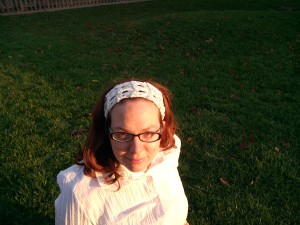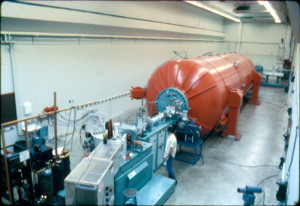If you found this page, you’re likely either following my blog or here to find out more about The Boss. So, here’s a little bit about me as a researcher, a CEO, an educator, and a human being. If you’re looking for how I can help you, check out this page to see what services I offer right now.
Let’s start with the basics. I’m a human as far as I know. I happen to be female, red hair, brown eyes… You can figure out the rest from looking at the picture. My name is Grace, and I’m addicted to science. I’m also addicted to writing, geology, soil, archaeology, tinkering, educating, and yarn. I’m also a habitual exerciser, and if I don’t get in my daily exercise, I get cranky.
You know when you’re growing up and everyone asks you what you want to be? I was one of those kids that asked, “Do I have to choose just one?” I wanted to be a scientist, but I didn’t know what kind. I also wanted to be an artist, but I didn’t know what medium I wanted to use. Over time, I tinkered with bits and bobs, wrote, painted, sculpted with clay, learnt chemistry and physics in my back yard, and stared at the stars too long. I eventually settled on fibre arts, and got addicted to crochet.
When I got to Purdue University, I started off in mechanical engineering and astronomy. I wanted to build machines and study gravitational pull in the cosmos. However, I didn’t want to sit as much as I did, so I changed majors to archaeology. At the time, I was thoroughly in love with the past, and I wanted to study it. I also liked being outside, and the idea of spending months in the field digging up this or that, or even just walking around hunting for clues on where to dig appealed to me.
In my freshman year of the programme, I started working at a NASA lab where we studied poo. That’s right, poo. Well, technically, I missed that portion of the programme where they had people eat specific diets, then use a toilet that would dump the waste into a containment area for them to study. We had a mechanical stomach which we put food into, and extracted it a few days later. I did a lot of chemical analysis and statistical data on mechanically digested poo. The whole goal of the project was to see if it could be recycled for plant food. (Answer: yes, it can.)
After that ended, I spent my last two years in a soil chemistry lab separating soil aggregates for carbon and nitrogen analysis. I learnt how to do a lot of things there, including how to use a mass spectrometer, analyse more data and statistics, and learnt that the number one tool in science is Duct Tape. This project took me through learning about biogeochemistry, soil sciences, and more than I really wanted to know about earthworm poop. (Yes, I see the same pattern.) While I didn’t get to do this part directly, I did get to see what earthworm poop looks like (tiny pellets) and help the Ph.D. student, Yini Ma, separate them.
Sometime in my sophmore year, I started volunteering via the school’s Earth and Atmospheric outreach programme as well as a local hands on science museum called Imagination Station. I felt like I finally found a home. I loved educating from the first moment I stepped out of my shell and started to explain the processes of science, the history and philosophy behind it, and even some of the social impacts when age appropriate. These times were probably the greatest I had during my undergraduate life, and I developed a passion for teaching all ages and all topics. I developed a flair for teaching hands on, but I also learnt how to lecture effectively and use PowerPoint to enhance the lectures rather than put the kids to sleep.
During this entire time, I plotted the my future research and development company, Insanitek. I had decided early on that I was going to do this, whether or not it was improbable and insane. However, to own such a company, I had to work my butt off and prove myself. I also needed a job, and I wanted a job in science. After all, I was addicted. I couldn’t stop then. So, it was onto graduate school.
By the time I got to grad school, I was addicted to soils, archeology, geology, and studying the past environment. I also loved to educate and tinker with new things and ideas. I wanted to combine all these. So, during my time in graduate school, I studied cosmogenic beryllium in the natural cycle. I alternated between my beloved field work and lab work to see if cosmogenic beryllium could tell the story of landscape erosion. Instead of finding a clear cut answer, I found more questions. It was here that I really began to understand and value the scientific process. I would do what it took to find an answer, only to come up with more questions. (We found that 10Be is sequestered in hickory trees, but we really don’t understand why.)
For a while, I worked as a science freelance writer while starting up my research and development firm. I also taught, went on archaeology digs, played in the soil, did a lot of technical writing, told stories, and crochet. I love what I do, but I’m always looking for a way to get more involved so I can continue to learn and grow.
Now, I can’t say I am “starting up” Insanitek. It’s started. Most of my life goes into being a CEO, teaching, digging in the dirt, telling stories (blogging here), and a lot of technical writing in the lab. I still crochet. I still love what I do every day.
I invite you to join me in the journey. Every month I hold a workshop webinar (free if you show up live) where we work through one aspect of being a scientist ─ whether you work for yourself or in a company or university. Things like networking, best practises, laws, and communication are high on the list, but sometimes we go into other areas, such as marketing. Want to join me? Give me your email below so I can send you the monthly invites.









